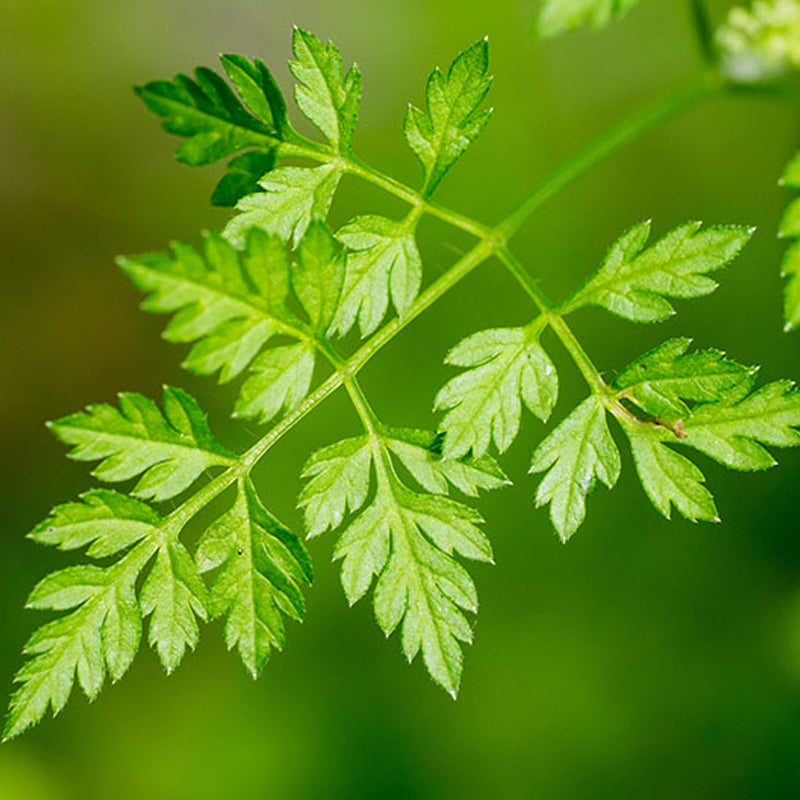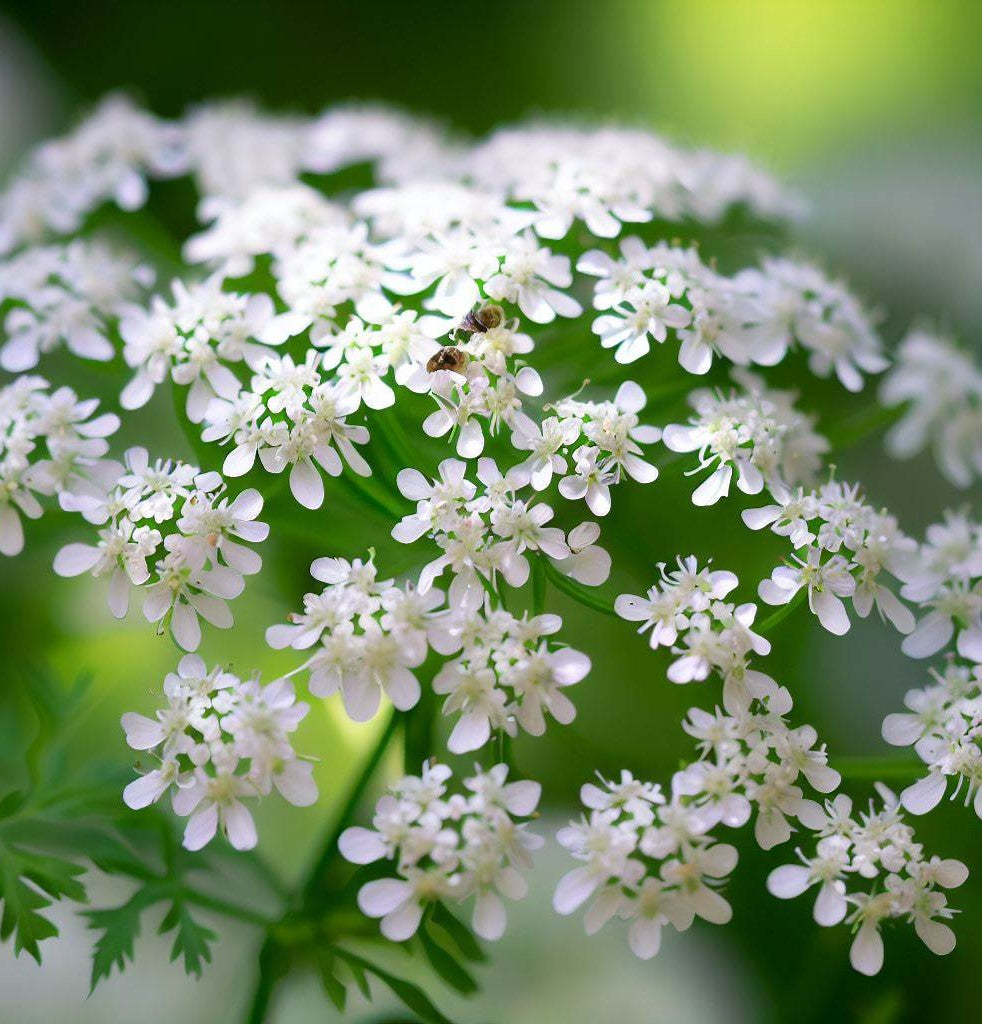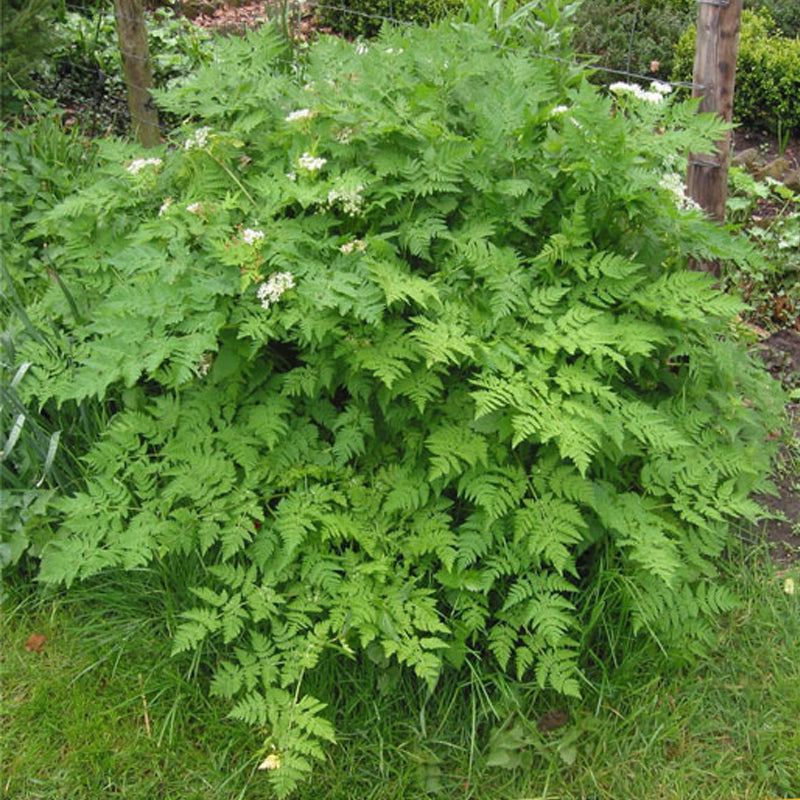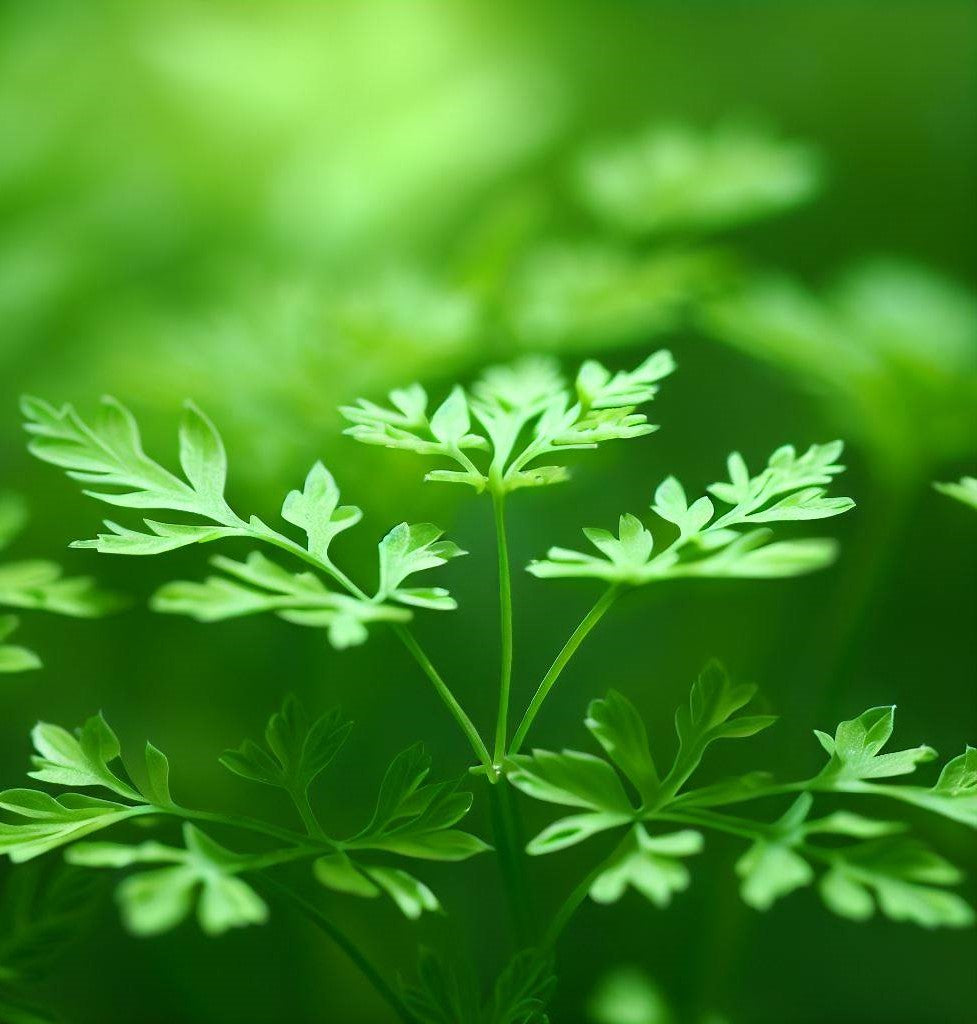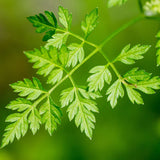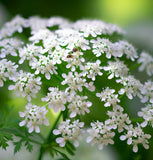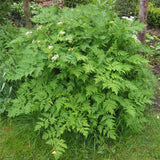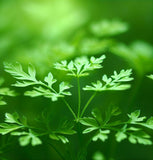Chervil, Curled (Anthriscus cerefolium)
Chervil, Curled (Anthriscus cerefolium) is a herbaceous plant that belongs to the Apiaceae family. It is commonly cultivated for its delicate, fern-like leaves, which have a subtle, yet distinctive flavor. Chervil is native to the Mediterranean region but is now grown in various parts of the world. Chervil has finely divided, curly leaves that resemble those of parsley or carrot tops. The plant reaches a height of about 12-24 inches (30-60 cm) when fully grown and produces small white flowers in umbels during summer.
Flavor and aroma: Chervil has a mild and delicate flavor that is often described as a combination of parsley and anise or licorice. It adds a subtle sweetness and freshness to dishes, making it a popular culinary herb.
Culinary uses: Chervil is highly valued in French cuisine and is one of the four traditional herbs used in fines herbes, along with parsley, chives, and tarragon. It is commonly used as a garnish and flavoring in soups, sauces, salads, egg dishes, and seafood. The delicate leaves are best added at the end of the cooking process to preserve their flavor.
Growing requirements: Chervil thrives in cool, partially shaded conditions, making it a popular herb for spring and autumn cultivation. It prefers well-drained, fertile soil with a slightly acidic to neutral pH. Regular watering is essential to keep the soil evenly moist. Chervil is an annual or biennial plant, but it tends to bolt and flower quickly, so it is often grown as an annual.
Cultivation: Chervil can be grown from seeds, which should be sown directly into the garden bed in spring or early fall. The seeds require light for germination, so they should only be lightly covered with soil. The plant grows relatively quickly, and the leaves can be harvested once the plant reaches a height of 6-8 inches (15-20 cm). Regular harvesting promotes new growth and helps prevent flowering.
Health benefits: Chervil contains various nutrients, including vitamins A, C, and K, as well as minerals like calcium, potassium, and iron. It has been used in traditional medicine for its potential diuretic, digestive, and detoxifying properties. However, it is primarily consumed in small quantities as a culinary herb, so its medicinal effects are typically not significant.
Cautions: Chervil pollen can cause allergic reactions in some individuals, particularly those who are sensitive to other plants in the Apiaceae family, such as carrots, celery, and parsley. If you have known allergies, it's advisable to exercise caution when handling or consuming chervil.
Overall, Chervil, Curled is a versatile and flavorful herb that adds a delicate touch to many dishes. Its mild taste and attractive appearance make it a popular choice for both professional chefs and home cooks.
Botanical name : Anthriscus cerefolium
Common name : Chervil, Curled
Life cycle : Annual
Days to maturity : 120
Light requirement : Full sun
Planting time : Spring/Summer
Sowing method : Direct sow
Planting depth : ¼”
Plant spacing : 12”- 18”
Ships : Year-round
Average seed per ounce : Approx. 2,000

